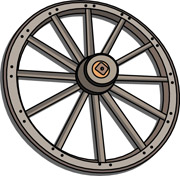Consumatory Scholarship!?! Sounds like someone eating books and articles!
In the Chronicle article Just Because We’re Not Publishing Doesn’t Mean We’re Not Working, Bruce Henderson argues that faculty  work is inadequately recognized by the public and by legislators who make demands for accountability. He also notes that “teaching” as an activity in higher education, is not respected. He notes, as an example, that those who do the most teaching (adjunct faculty) receive lower pay.
work is inadequately recognized by the public and by legislators who make demands for accountability. He also notes that “teaching” as an activity in higher education, is not respected. He notes, as an example, that those who do the most teaching (adjunct faculty) receive lower pay.
I agree.
We do not honor teaching as we should. Universities usually measure and reward teaching by counting publications (research), looking for a key number on student evaluations (e.g. 4.0 on a 5 point scale or meeting the department average) and relying on peer evaluations, Publications in one’s area of expertise do not necessarily translate to good teaching, student evaluations are notoriously unreliable (see my latest post on student evaluations) and peer evaluations are only an indicator of one (or two) colleagues’ attendance at one or two classes. Adjunct faculty’s jobs are at risk if they have low student evaluations, even though the link between student evaluations and teaching is tenuous. So, let’s begin measuring teaching effectively: let’s show students, faculty and legislators how and what students learn. Let’s do that using evidence-based teaching practices, explaining how innovations can help improve learning and reward faculty who do their part (and remind others how learners must do their part).
University administration should reward faculty for their teaching accomplishments. And that means ALL teaching faculty, not only tenure-track faculty. Then, the public can begin to see that not only do many teachers work hard, that they work more than 12 hours per week but that we provide a substantial benefit to society.
I sometimes wonder whether there’s an element of classism, anti-feminism and racism in the continual demands for accountability. The University faculty and administrators were overwhelmingly middle-class white males in the 60s. Now, it’s much more diverse. The increase in diversity parallels the increased demands for accountability. And while I know correlation doesn’t mean causality (and accountability demands have complicated causes), it is frustrating to know that for years, higher education faculty faced no obligation to justify existence. During those times, faculty presented material in a way that only certain types of learners (those you might call read-write learners) could succeed.  Tenure was awarded based on a handshake (at least according to some of the faculty who retired just as I came on board) or solely based on the school from which the faculty member obtained his Ph.D. And while I was successful in that environment, I recognize that my success shouldn’t be the only measure of whether anyone else can garner educational success. I have met students and others who were just as intelligent, but who learn in different ways. So, I recognize that this system of teaching is not the only means of communicating.
Tenure was awarded based on a handshake (at least according to some of the faculty who retired just as I came on board) or solely based on the school from which the faculty member obtained his Ph.D. And while I was successful in that environment, I recognize that my success shouldn’t be the only measure of whether anyone else can garner educational success. I have met students and others who were just as intelligent, but who learn in different ways. So, I recognize that this system of teaching is not the only means of communicating.
I also wonder whether the accountability demands reflect an attack on intellectualism; that the demands represent an attack on those who want to explore and learn. In his blog posts, The Real Ken Jones discusses this in more depth in his “Celebrating Stupidity” series. He focuses on some of the contradictions between science and what some what to believe. Whether the attack on education is related to an attack on intellectualism in general is subject to debate, but there does continue to be a significant attack on education: justified on some grounds but not on others.
So this discussion returns to the topic line: what should we as educators do to let the public and legislators know what we do in the classroom? Regardless of the cause of the controversy, we need to figure out how to address it–how to rebuff the attacks and to go on the offensive. We provide an invaluable service to the community, yet that gets lost in the rhetoric about accountability. Is using the term “Consumatory Scholarship” and defining it a way to address it? I think not-the essence is in the details. But to the core question I do not yet have an answer.
Do you?





